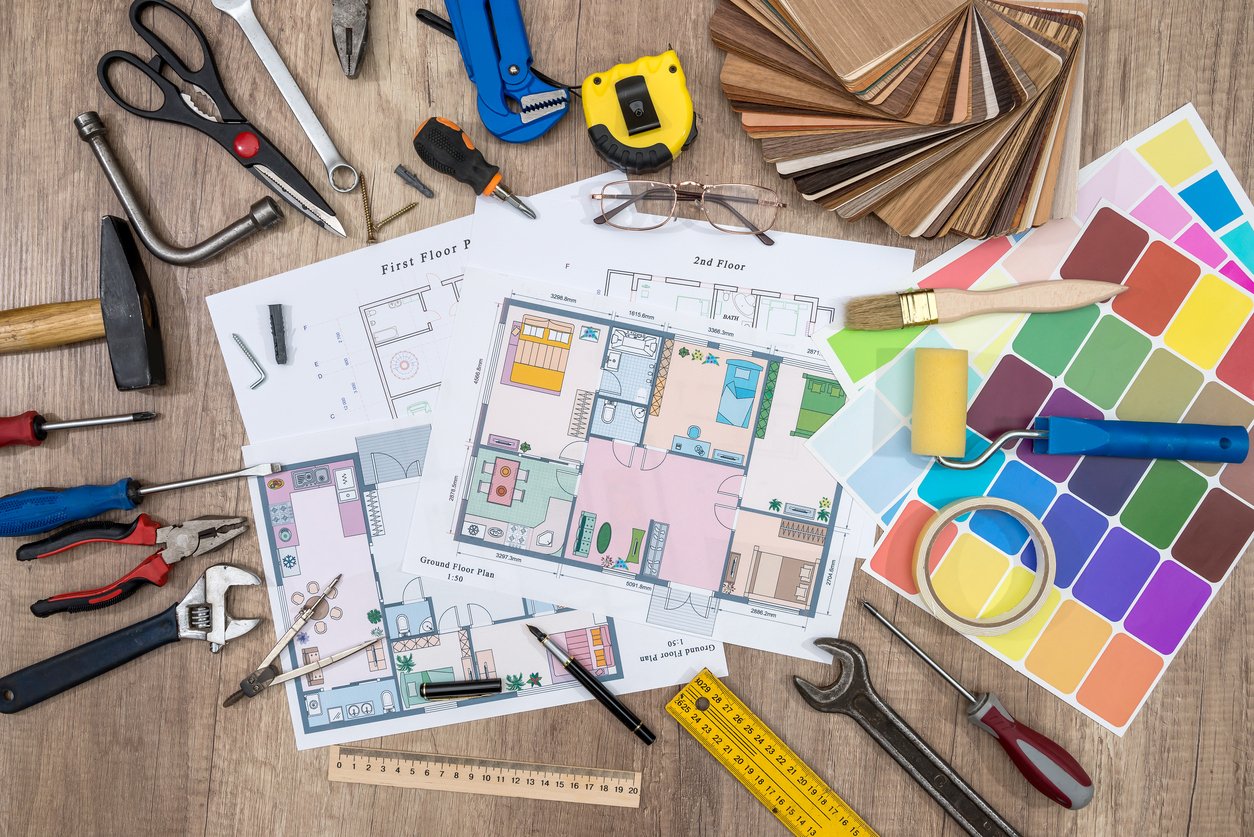Once you’ve established everything you want from your remodeling project and the estimate comes in, you may need to reassess your priorities. Unless you’re making simple changes like painting and putting down new flooring, it’s not uncommon for a home renovation budget to come in higher than you anticipate. Rather than go back to the drawing board, consider these approaches first.
Go Back to the Basics
When the estimate exceeds your budget by far more than you expected, it’s time to do a line-by-line analysis. Note which improvements are driving up the cost of the project. Determine whether they’re associated with the basics of the project or with the finishes.
The basics include:
- Increasing the square footage.
- The infrastructure that includes the wiring, plumbing and HVAC.
- Functionality like doors, windows and cabinetry.
The finishes include:
- Floor coverings.
- Wall and ceiling finishes.
- Upgrades to doors, windows and cabinetry.
Discuss whether you want to scale the project back in terms of square footage, infrastructure components, or functionality. If the basics aren’t an option, take another look at what you’ve got planned for the finishes. Some people find that they can compromise on finishes for the short term and save the upgrades for the future.
Consider Compromises
If you need all the space finished and doing so will exceed your home renovation budget, consider scaling back some of the project. Decide whether you need all the additional square footage added or retrofit. Your architect, contractor, or builder is the best source to discuss how to phase the project instead of doing everything at once.
Although they’re not as emotionally rewarding, making the infrastructure improvements the first step and the visible physical improvements the second or third phases will keep you within the budget.
Unless you live in an unusual home, it’s much less expensive to make changes to the plumbing, wiring and HVAC as the initial phase in the long run rather than do it later. You’ll see savings on both parts and materials when you plan and execute for the basics first and the rest later.
Discuss Value Engineering
You may have 12 foot ceilings in the home renovation budget, but you might find that sticking with a 10 foot plate saves you more money than seems reasonable. Home builders call this value engineering. Not only does a 10 foot wall stud cost less than a 12 foot stud, it’s also easier for the framing team to handle. Labor costs are always a significant contribution to the price per square foot of any project, whether it’s a new build or a remodel.
Your builder is the best source for tips on how to value engineer the project. They’re the professional who purchases and uses all the products used in home construction. You can rely on the input a licensed homebuilder and remodeler provides.
Bottom Line
The estimate and the first review of the home renovation budget may be an eye-opener. It’s easy to think that it may be a deal breaker, but in reality, it’s just the starting point for you and your renovation team to define the scope of the job, which is a solid first step.
Alair Homes Calgary makes it a point to provide our clients with transparent, honest and thorough pricing for their home renovations, and hidden charges are not a part of the way we do business. This helps you to have an accurate feel for what your home renovation will cost. We’ll also work with you to determine plans for cutting back, should that be necessary, and we’ll leverage our reputation to secure value pricing on everything it takes to get the room of your dreams. We welcome the opportunity to discuss your project. Contact us to schedule a complimentary consultation.


